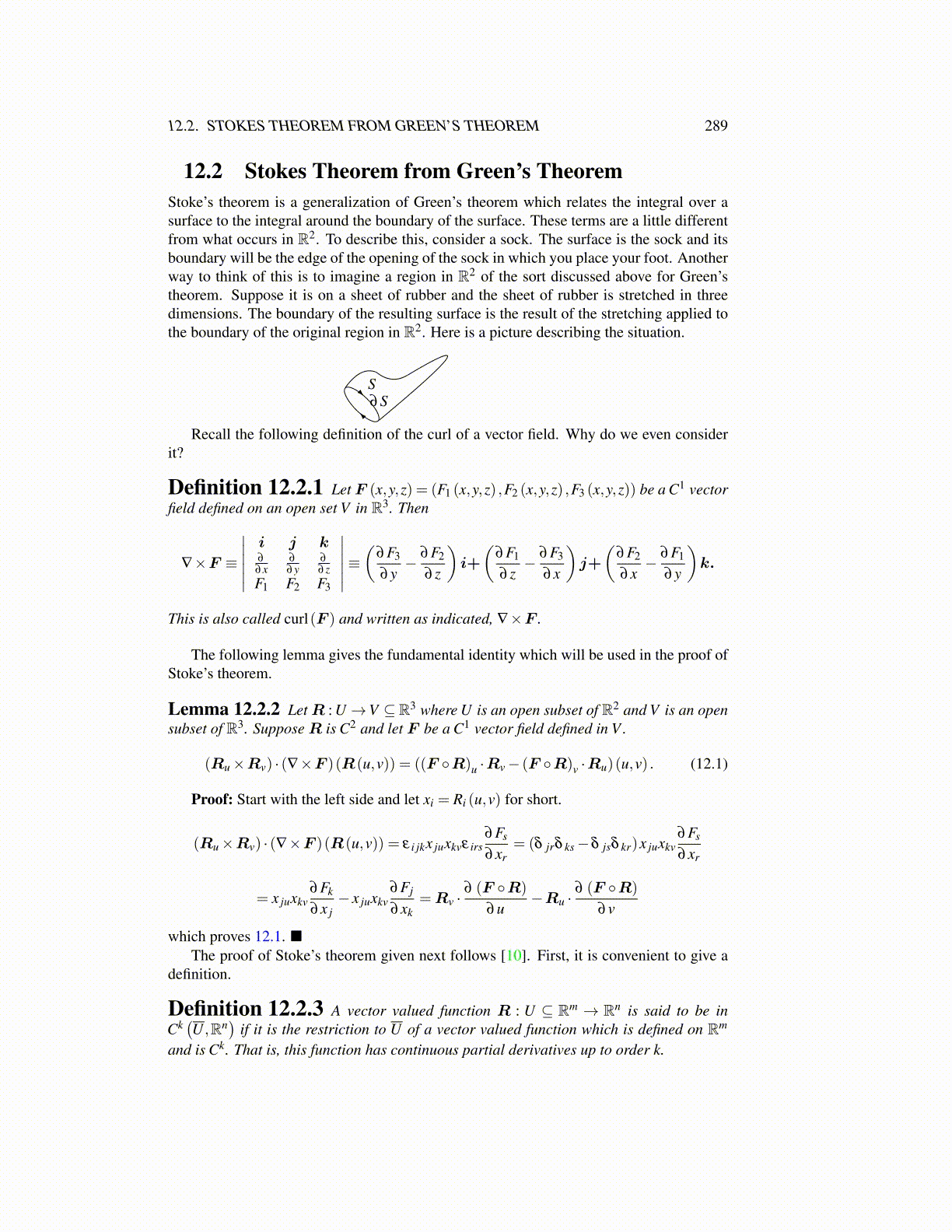
12.2. STOKES THEOREM FROM GREEN’S THEOREM 289
12.2 Stokes Theorem from Green’s TheoremStoke’s theorem is a generalization of Green’s theorem which relates the integral over asurface to the integral around the boundary of the surface. These terms are a little differentfrom what occurs in R2. To describe this, consider a sock. The surface is the sock and itsboundary will be the edge of the opening of the sock in which you place your foot. Anotherway to think of this is to imagine a region in R2 of the sort discussed above for Green’stheorem. Suppose it is on a sheet of rubber and the sheet of rubber is stretched in threedimensions. The boundary of the resulting surface is the result of the stretching applied tothe boundary of the original region in R2. Here is a picture describing the situation.
∂SS
Recall the following definition of the curl of a vector field. Why do we even considerit?
Definition 12.2.1 Let F (x,y,z) = (F1 (x,y,z) ,F2 (x,y,z) ,F3 (x,y,z)) be a C1 vectorfield defined on an open set V in R3. Then
∇×F ≡
∣∣∣∣∣∣i j k∂
∂x∂
∂y∂
∂ zF1 F2 F3
∣∣∣∣∣∣≡(
∂F3
∂y− ∂F2
∂ z
)i+
(∂F1
∂ z− ∂F3
∂x
)j+
(∂F2
∂x− ∂F1
∂y
)k.
This is also called curl(F ) and written as indicated, ∇×F .
The following lemma gives the fundamental identity which will be used in the proof ofStoke’s theorem.
Lemma 12.2.2 Let R : U →V ⊆R3 where U is an open subset of R2 and V is an opensubset of R3. Suppose R is C2 and let F be a C1 vector field defined in V .
(Ru×Rv) · (∇×F )(R(u,v)) = ((F ◦R)u ·Rv− (F ◦R)v ·Ru)(u,v) . (12.1)
Proof: Start with the left side and let xi = Ri (u,v) for short.
(Ru×Rv) · (∇×F )(R(u,v)) = ε i jkx juxkvε irs∂Fs
∂xr= (δ jrδ ks−δ jsδ kr)x juxkv
∂Fs
∂xr
= x juxkv∂Fk
∂x j− x juxkv
∂Fj
∂xk=Rv ·
∂ (F ◦R)
∂u−Ru ·
∂ (F ◦R)
∂v
which proves 12.1. ■The proof of Stoke’s theorem given next follows [10]. First, it is convenient to give a
definition.
Definition 12.2.3 A vector valued function R : U ⊆ Rm → Rn is said to be inCk(U ,Rn
)if it is the restriction to U of a vector valued function which is defined on Rm
and is Ck. That is, this function has continuous partial derivatives up to order k.